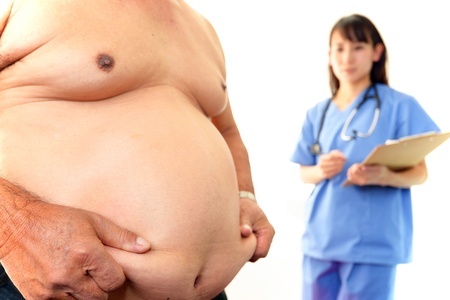

- HGH Deficiency
- So you took a look at yourself in a mirror recently and your heart sank by what you saw.
- Can Human Growth Hormones Really Reverse the Signs of Aging
- We hear about HGH or human growth hormone supplements far more often than we did just a few years ago.
- HGH Benefits for Men
- There are several benefits that males can derive from HGH use, although these are mostly off-label.
- How to Handle an HGH Deficiency in Adults?
- our physician tells you that you have a human growth hormone deficiency or HGH deficiency – now what? What does this mean?
- HGH Use for Bodybuilding
- Human growth hormone (HGH) is considered highly essential for the health and wellbeing of an average person.
- GenF20Plus Double Blind Clinical Study Shows Results That are Promising
- The market is full of unproven HGH products, but only the manufacturer of Genf20 Plus has taken the time to conduct a double blind clinical study.
Gynecomastia in Men and How HGH Affects It
Gynecomastia – a big word and likely one you haven’t heard
until recently. So what is gynecomastia? And what are the
symptoms of gynecomastia? Glad you asked. We’ll look at what
gynecomastia is, the risks, how HGH affects it and much more.

Gynecomastia is the enlargement of the male breast tissue. Often after puberty or in old age this can naturally occur. Gynecomastia is caused when an imbalance occurs between estrogen action relative to androgen action at the breast tissue level.
What many are not aware of is that the male body naturally has small amounts of estrogen. However, some steroids and synthetic human growth hormone injections can result in an excess of estrogen occurring through the aromatization process. When this large estrogen concentration occurs, it can result in some undesirable side effects like the enlargement of the breasts (gynecomastia), water retention and female pattern fat distribution. Gynecomastia can also occur when higher concentrations of estrogen occur relative to your body’s level of testosterone. More about that later.
Gynecomastia Symptoms
The symptoms of gynecomastia include:
- Swelling of the nipples and breast tissue
- Tenderness of the nipples and breast tissue
- Itchiness of the nipples
If you experience these symptoms you should seek immediate treatment, because once there is the formation of breast tissue, it is permanent. Not everyone who uses steroids will find themselves dealing with estrogen related problems. Many take numerous cycles of high steroid dosages without taking anti-estrogens and have not had any gynecomastia symptoms. Yet others take small doses of steroids for as little as one cycle and immediately develop noticeable breast enlargement.
How to Prevent Gynecomastia?
Gynecomastia can be prevented by preventing estrogen from forming with an aromatase inhibitor, or by blocking estrogen from being able to bind to the estrogen receptors in the body. There are non-prescription anti-estrogens considered trustworthy.
If you are taking steroids, gynecomastia can be prevented by taking anti-estrogens. Arimidex (anastrozole), Nolvadex (tamoxifen citrate) and Proviron (mesterolone) all work as anti-estrogens.
The majority of bodybuilders like to block the estrogen from forming. They prefer this because not only does it prevent gynecomastia, it also decreases water retention, which leaves them with a harder looking body. Nolvadex blocks estrogen from binding to the estrogen receptors in the body.
If you take steroids you should always have an anti-estrogen on hand. Even if you take an aromatase inhibitor like Proviron or Arimidex, you should keep some Nolvadex in case your dose is too low and you start to see gynecomastia symptoms.
How to Take Arimidex
Typical dosages for Arimidex start as low as 0.25 mg a day up to 1.0mg a day. 0.5 mg a day Arimidex is the average dosage.
How to Take Proviron
Typically the Proviron dosage of 50 mg a day. You take one tablet in the morning and one in the evening.
How to Take Nolvadex
Nolvadex is usually only taken once there are symptoms of gynecomastia. Typically the dosage ranges from 20mg to 40mg every day and continues until the symptoms are gone. Many are instructed to take Nolvadex even after their symptoms have subsided, through until the end of their cycle.
Should You Stop Your Steroids?
If you are taking steroid and start to have symptoms of gynecomastia and you do not have anti-estrogens, it will not help to stop your steroids mid cycle. If you do, it can make it worse. There will be estrogen remaining in your body so the breast tissue continues to build. There will be steroids that remain in your body for 2-3 weeks after injections stop, which will continue to convert to estrogen and continue to cause the breast tissue to build.
Once the steroids are metabolized, your testosterone levels will be almost zero and your body's natural estrogen levels are going to be very high, which also means breast tissue will continue to grow.
Bottom line – stopping your steroids isn’t going to stop gynecomastia, but taking anti-estrogens will stop gynecomastia. Better yet Don't use steroids at all!
If you do not use an aromatase inhibitor during your cycle like Proviron or Arimidex, you should always make sure you have Nolvadex handy. Even when you use aromatase inhibitors, it is a good idea to have Nolvadex handy just in case your Proviron or Arimidex dose is too low or you miss doses.
What to do If You Start Having Gynecomastia Symptoms
Once there is estrogen in your system, taking an aromatase inhibitors won’t prevent the estrogen that has formed from causing gynecomastia. Nolvadex can treat your symptoms and it is the only drug that can stop gynecomastia once the symptoms appear. That’s because Nolvadex stops estrogen from binding to your estrogen receptors. Nolvadex is usually taken only in situations where gynecomastia symptoms appear.
If you are on low-moderate doses of steroids, take Nolvadex according the following schedule:
- 40 mg day 1
- 20 mg each day until the symptoms are gone
- 10 mg a day through the end of Clomid therapy
If you are taking a higher steroid dosages you might need larger amounts of Nolvadex, so double the amounts:
- 80 mg day 1
- 40 mg each day until the symptoms are gone
- 20 mg a day through the end of Clomid therapy
Will You Lose Your Gains When You Stop Taking Steroids? Keeping the Gains You Made On Anabolic Steroids?
One problem with steroids is that they will temporarily shut down your body’s natural production of testosterone, so once the steroid cycle is complete, the body stops producing testosterone. Without natural testosterone you have no libido, you feel tired and muscle loss can occur.
Can HGH Cause Gynecomastia
We’ve already established that gynecomastia can be the result of steroid use, because there is an altered balance of a man’s hormones. Oftentimes, the tissue build up from this abnormal ratios of estrogen, Prolactin and testosterone, is irreversible. Surgery may be the only solution for gynecomastia, which will remove the excess breast tissue. Does HGH also cause gynecomastia? The answer is yes, because HGH is also a hormone that can throw hormonal levels of their balance especially the hormone prolactin.
You Should Use HGH Only Under Medical Advice
Before you begin any HGH regimen, it is important that you get the advice of your physician. Your physician will advise you on the proper HGH dosage. When HGH is not constantly administered or when there are lapses in HGH treatment, this can cause a hormonal imbalance that can result in effects like gynecomastia. That’s because the pituitary gland is the master gland of the body excreting growth hormone and it also regulates sex hormones. Men develop increased levels of estrogen and prolactin compared to testosterone and as a result gynecomastia can occur.
Never Administer HGH With Other Steroids
 If you are using steroids while you are taking HGH, you
increase your chance of developing gynecomastia. This is because
both HGH and steroids cause hormonal imbalances. If you are
unable to avoid taking steroids with HGH, you should use one of
the drugs we’ve already discussed to stop estrogen from forming
in your body. They can reduce gynecomastia.
If you are using steroids while you are taking HGH, you
increase your chance of developing gynecomastia. This is because
both HGH and steroids cause hormonal imbalances. If you are
unable to avoid taking steroids with HGH, you should use one of
the drugs we’ve already discussed to stop estrogen from forming
in your body. They can reduce gynecomastia.
Stay Fit and Watch Your Weight
Sometimes HGH isn’t the cause of your gynecomastia. In some cases it can be your weight. If you are overweight, you will have increased estrogen production from your fat or adipose tissue. This in turn can trigger a hormonal imbalance leading to gynecomastia.
You also need to watch out for other conditions and disorders that can cause gynecomastia, such as liver disease, genetic disorders or tumors. The use of marijuana can also cause gynecomastia.
Gynecomastia is a very real concern. Being aware of the causes and what can be done to prevent it is important. If you are using steroids or synthetic HGH injections know your risks. NB: The information in this article should not be used to self diagnose or to treat Gynecomastia only a doctor can diagnose it and treat It.

- "A lot of great info on HGH therapy and HGH supplements"
- Stan (Fort Lauderdale)
- "I almost started using prescription HGH injections but because of the high cost involved and the long list of side effects I opted for Genf20 plus instead and I was glad I did!"
- Jenifer (Los Angeles)
- "Before buying Genf20 Plus You must read the reviews at genf20plus.info"
- Eric (San Diego)
- "Thanks for showing both the benefits and the risks of using HGH"
- Nancy (NYC)
- Latest Articles
- All You Need to Know About HGH Replacement Therapy
- Human growth hormone (HGH) is required for some essential functions in the body.
- Maximize Your HGH Levels With Genf20 Plus, Diet and Lifestyle Choices
- Taking the HGH supplement can also help your pituitary gland to produce more HGH.
- Does Human Growth Hormone Work for Weight Loss?
- In addition to using HGH supplements you should consider intensive exercise and intermittent fasting.
- Gynecomastia in Men and How HGH Affects It
